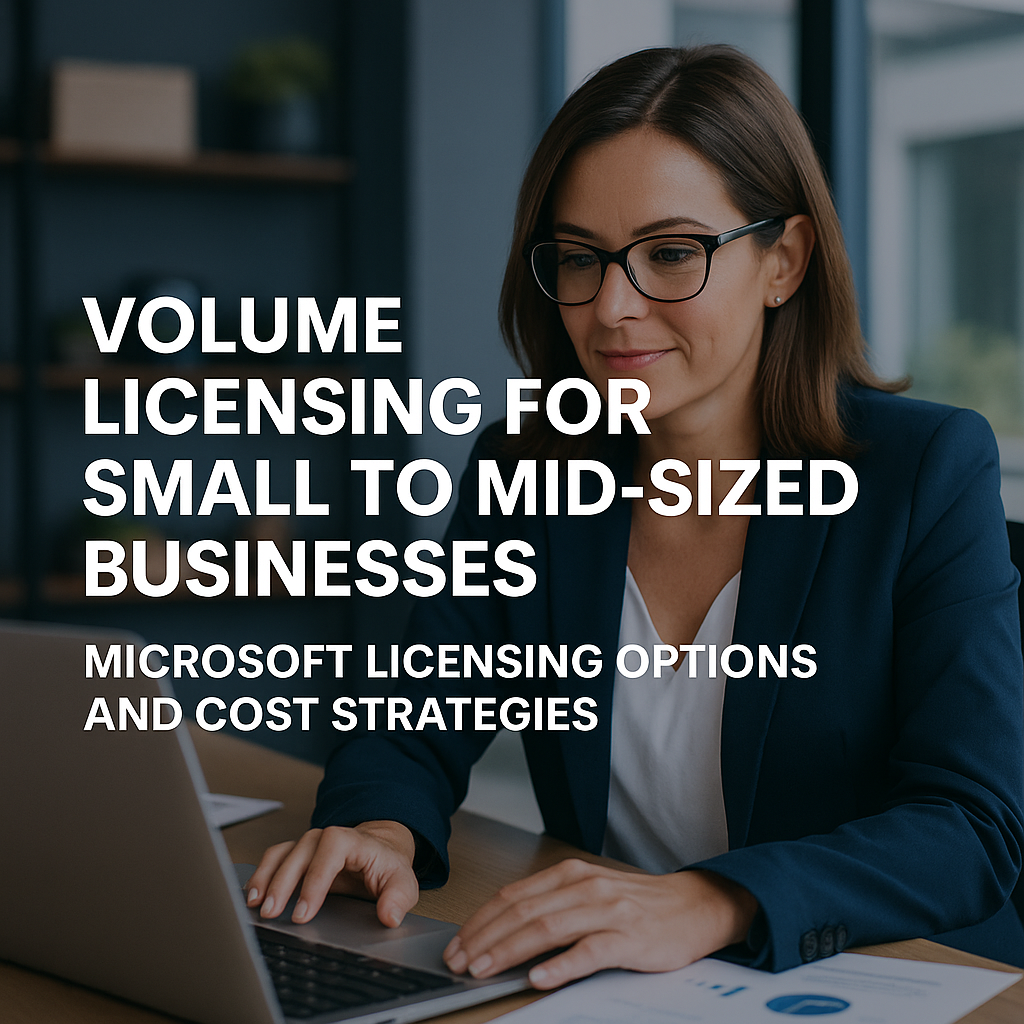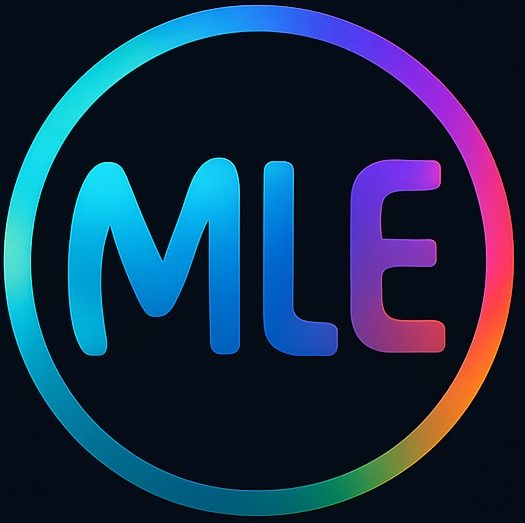Volume Licensing for Small to Mid-Sized Businesses

Introduction – Why SMBs Need a Clear Microsoft Volume Licensing Strategy
Small and mid-sized businesses (SMBs) often end up overpaying for Microsoft software by using licensing models designed for large enterprises.
Without a tailored strategy, an SMB might sign up for costly enterprise agreements or buy more software than needed. Often, this happens because Microsoft or its partners push enterprise-level deals that exceed the SMB’s actual needs.
Microsoft does offer volume licensing programs specifically for SMB needs.
These programs strike a balance between cost and flexibility, enabling smaller organizations to obtain the software they need without overspending or committing to unnecessary extras.
By understanding the options and key cost drivers, SMBs can optimize their Microsoft licensing and avoid common pitfalls.
Read our overview, Microsoft Volume Licensing Programs: How to Choose (and Negotiate) the Right Model for Your Enterprise.
Microsoft Volume Licensing Options for Small to Mid-Sized Businesses
Microsoft Open Value Program
The Open Value program is designed for small to midsize organizations with as few as five PCs. It’s a simplified 3-year volume licensing agreement for SMBs. Open Value offers a customizable platform where you can either own licenses outright or subscribe for the agreement term. It includes Software Assurance (which provides free upgrades, training, and support).
Open Value Subscription
Open Value Subscription (OVS) is the subscription-based version of Open Value. It offers a lower upfront cost (you’re essentially renting) and the flexibility to decrease or increase your license count each year as your needs change.
Microsoft CSP (Cloud Solution Provider) for SMBs
The Cloud Solution Provider (CSP) program is Microsoft’s modern subscription licensing channel. Delivered via partners, CSP is highly flexible for SMBs moving to Microsoft 365 and Azure.
Key points about CSP for SMBs:
- Monthly or annual subscriptions: Instead of a long-term contract, you purchase licenses as subscriptions (such as Microsoft 365 Business or Office 365 seats) on a monthly or yearly basis. You pay per user per month, and you can choose between month-to-month plans or annual commitments.
- Flexible scaling: CSP allows you to increase or decrease license counts as needed. If you hire new employees or have seasonal workers, you can add licenses for those users and later remove them when they’re no longer needed. This prevents paying for licenses year-round that you only need for part of the time.
- Partner-managed service: In CSP, you work with a Microsoft reseller who handles billing and support. Even the smallest business can use CSP (no minimum size requirement). The partner can also advise on license selection and may bundle in extra services.
For many SMBs, CSP has become the go-to choice, especially when moving to the cloud. It provides much more flexibility than a multi-year volume license agreement.
Perpetual Licensing Through Resellers
Despite Microsoft’s push toward subscriptions, many SMBs still prefer one-time purchases (perpetual licenses) to own software outright. Key ways to get perpetual licenses as an SMB:
- Volume licensing options: SMBs can still purchase perpetual licenses through Microsoft’s volume programs. Open Value agreements allow buying license-only (perpetual) versions of software, and CSP partners can also sell perpetual licenses for certain products. These give you ownership of the software at a volume discount.
Perpetual licensing remains an option if your business strategy is to make a one-time investment and use the software as long as needed without ongoing fees. This can be cost-effective for stable environments where upgrades are infrequent.
Read more, Software Assurance in Volume Licensing Programs.
Cost Drivers in Microsoft SMB Licensing
User Headcount and License Type
The number of users (or devices) you need to license is an obvious cost factor, but equally important is matching each user with the appropriate license type.
Microsoft offers Business-tier plans for SMBs and Enterprise plans (like E3/E5) for larger organizations:
- SMB plans vs. Enterprise plans: Business plans (Microsoft 365 Business Basic, Standard, Premium, etc.) are capped at 300 users and come at a lower price per user than Enterprise plans. If you have 300 or fewer users, sticking with these SMB-specific subscriptions can yield significant savings. Only upgrade to the pricier Enterprise (E3/E5) licenses for users who truly need those extra features.
Cloud vs. On-Premise Needs
Your mix of cloud services versus on-premises software can greatly affect costs:
- On-premises server licensing: Running servers on-premises (like Windows or SQL Server) requires buying the server software licenses and client access licenses (CALs) for each user/device. These costs can add up quickly for an SMB.
- Cloud services instead of servers: Moving workloads to the cloud (Microsoft 365, Azure) eliminates the need to buy on-prem server software and CALs for those systems. Using Exchange Online means no Exchange Server license or CALs to purchase. Cloud subscriptions have ongoing costs, but they replace hardware and maintenance expenses.
- Hybrid scenarios: If you use a mix of on-premises and cloud, you pay for both models. You might be paying Microsoft 365 subscription fees and maintaining Windows Server licenses for local systems. Audit your environment and phase out any on-premises systems that duplicate what cloud services offer to avoid double-spending.
Add-Ons and Security Features
Microsoft’s ecosystem includes many add-on products and advanced features that can increase costs if widely deployed. SMBs should evaluate these extras carefully:
- Advanced security and compliance: Advanced security features are valuable but costly. Provide them only to users who truly need those tools (like IT admins or highly sensitive roles), rather than to everyone.
- Microsoft 365 Copilot and AI tools: The new AI-powered assistant, Microsoft 365 Copilot, is a premium add-on (around $30 per user per month). Enabling this for every user could nearly double your Microsoft 365 spend. Evaluate expensive AI or security add-ons carefully and consider rolling them out to a limited group first.
Negotiation & Optimization Strategies for SMB Licensing
Right-Size Licenses by Role
Align license types with each employee’s role and actual usage:
- Mix and match plans: You don’t need one license type for everyone. Assign higher-tier licenses (E3/E5 or Business Premium) to users who need advanced features, and use basic or frontline licenses (F3, Business Basic) for those with lighter needs. This avoids paying for features that some staff will never use.
- Use add-on licenses selectively: If only a few users need a particular feature (for example, Power BI Pro or a Teams Phone System), buy those as individual add-on licenses rather than upgrading everyone to a more expensive license tier that includes it. Each user gets what they need, and no more.
Benchmark SMB Discounts
Don’t assume the first price you’re quoted is the best you can get. Microsoft’s pricing for SMB programs (like CSP or Open Value) can have some room for negotiation or partner-based discounts:
- Compare multiple resellers: Get quotes from several Microsoft partners for the same set of licenses, and let them know you’re evaluating options. This competition can prompt better pricing or extra value-added services as they vie for your business.
- Microsoft promotions: Keep an eye out for Microsoft’s own promotions in CSP or Open Value programs. There are often special discounts or bonus months offered. A good partner will inform you of these; be sure to ask if any current promotions apply to your situation.
SMBs might not get the huge discounts large enterprises do, but smart shopping among Microsoft partners can still yield savings.
Use Subscription Flexibility
One advantage of cloud licensing is the agility it gives smaller organizations. An SMB can make quick adjustments and capitalize on subscription flexibility:
- Monthly term licenses: If your workforce fluctuates seasonally or you run short-term projects, consider monthly subscriptions through CSP. They allow you to drop licenses at any time, so you’re not paying for a full year when you only need a service for a few months.
- Avoid over-provisioning & scale down: Remove or reassign licenses that aren’t being used, and don’t buy more licenses than necessary “just in case.” With cloud subscriptions, you can quickly add licenses when needed, so you minimize idle licenses.
Using the flexibility of subscriptions ensures you’re always aligned with actual needs and not paying for licenses that provide no value.
Consolidate Purchases
- Consolidate with one partner: Use a single provider and contract for all Microsoft purchases. Combining all licenses under one agreement can unlock better volume pricing and make negotiations easier. Plus, a strong partnership often yields extra support or custom deals.
- Align renewals and licensing organization-wide: Coordinate your licenses to renew at the same time and consider covering all users under one agreement. Consolidating separate purchases into one company-wide renewal increases your volume leverage and can qualify you for better pricing tiers.
FAQ – Microsoft Licensing for SMBs
Q1: What is the best Microsoft licensing program for SMBs?
A: If you primarily use cloud services, the CSP program is often best for SMBs. If you need on-premises software with Software Assurance, Open Value may suit you.
Q2: Can SMBs use Enterprise Agreements?
A: Generally ,no—Enterprise Agreements are intended for very large organizations (500+ users). Most SMBs won’t qualify or benefit from an EA’s scale. Instead, smaller companies stick to programs like Open Value or CSP.
Q3: Is CSP better than Open Value for small businesses?
A: CSP offers more flexibility (month-to-month scaling and easy cloud service access), which suits many small businesses. Open Value is better for those needing perpetual licenses or a fixed 3-year agreement with Software Assurance. “Better” depends on whether you prioritize flexibility or owning licenses.
Q4: Do SMBs still have perpetual licensing options?
A: Yes. SMBs can still buy perpetual (one-time purchase) licenses via Open Value or CSP partners. This is useful if you prefer to own software outright rather than subscribe.
Q5: How can SMBs reduce Microsoft licensing costs?
A: Regularly audit your licenses and remove any that aren’t used. Assign lower-cost plans to users who don’t need advanced features. Shop around different resellers for better prices. Use subscription flexibility to temporarily scale down licenses during slow periods to avoid paying for idle capacity.
